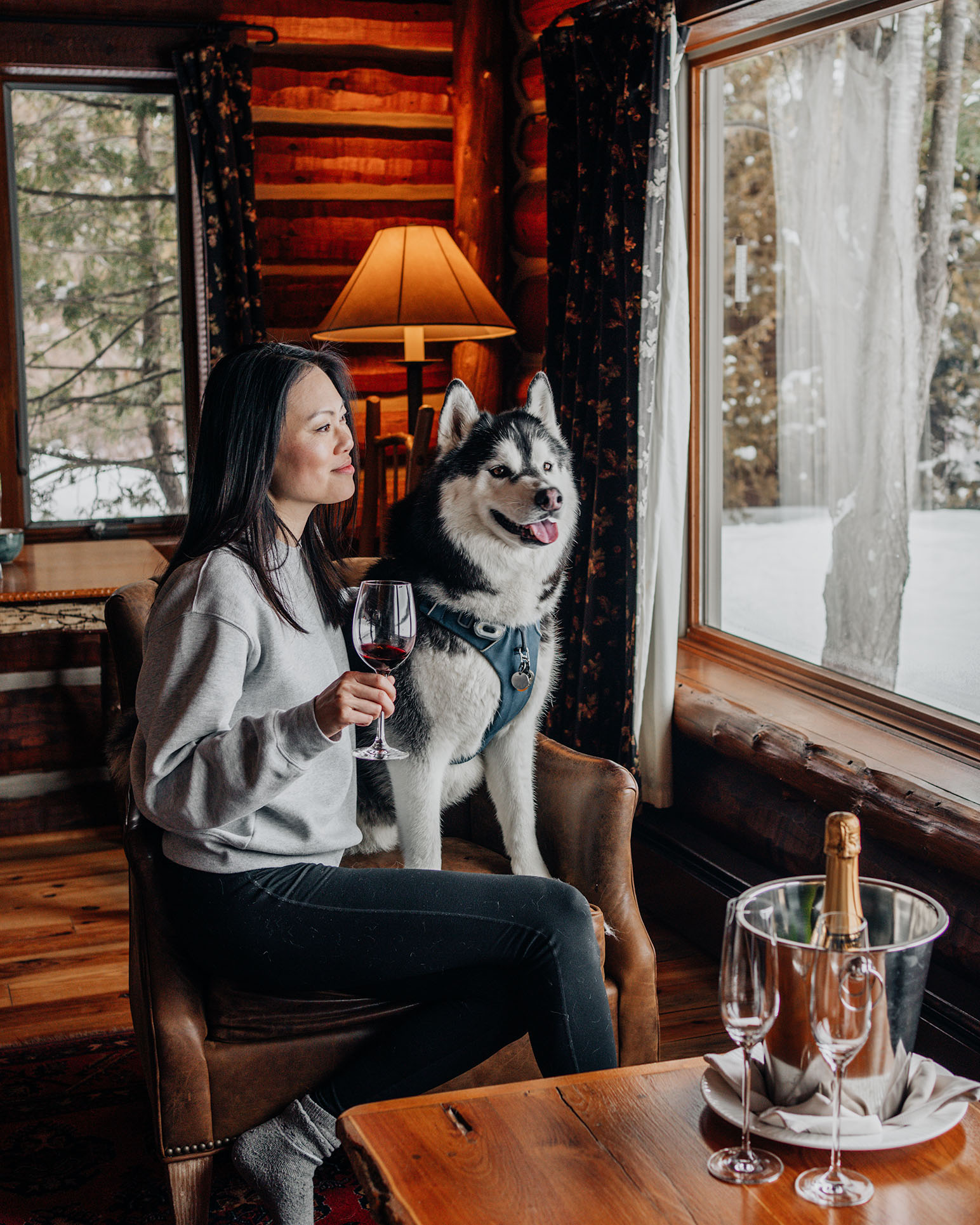
Crate training was definitely one of the hardest things we had to do when we brought Gatsby home at 8 weeks old. As soon as we put him in his crate and went out of his sight, he would just cry and scream like there was no tomorrow. How can we blame him? He’s just a puppy who’s away from his littermates and mom for the first time. It took us a few months to crate train him. We also prevented separation anxiety along the way.

Here is how I successfully crate-trained my dog:
- We slept next to the crate – Gatsby’s crate is in the living room, right outside our bedroom. Starting on the first night, my husband and I took turns sleeping next to the crate. Gatsby stopped crying and went to sleep. He woke up every now and then to see if we were still there. We moved a little bit further away from the crate every night until we finally made our way out of sight and into our bedroom.
- An appropriate sized crate with a divider – We bought him a 42-inch crate that would be big enough for him as he grows into his adult size. The crate comes with a divider which helps because if the crate has too much room inside, your puppy may choose to relieve himself in one corner and sleep in the other. You can use the divider to adjust the interior space to grow with your puppy.
- Created a super cozy crate– We got a crate cover to give Gatsby the feeling he was in his own little den. After we successfully potty trained him, we then got him a crate bed. I wanted to get him something soft but durable so we bought him K9 Ballistics Tough Dog Crate Pad. This crate pad worked out really well for us. It tolerated Gatsby’s digging and I would say its chew proof. K9 Ballistics has a 120-Day Chew Proof Promise. If your dog damages their bed within 120 days after receiving it, they’ll issue you a one-time store credit that can be used to replace your damaged product. You can also personalize it with your pup’s name.
- Fed meals in the crate – We did this because we wanted Gatsby to think the crate is a safe and good place to be. We fed him his meals in the crate for about a few months and then gradually started feeding him away from the crate.
- We gave him treats in his crate – Same idea as above. The goal was to create a positive association with the crate.
- We established a routine – We put Gatsby in his crate at 9 pm every night. Over time, it became a routine, and dogs are all about routines! Now that Gatsby is almost 2 years old, he’s learned to love his crate. We always leave the crate door open and he goes in there by himself when it’s time for bed.
- Desensitization – At first, when Gatsby didn’t see us while he was in his crate he would freak out. The goal was to desensitize him to this. Separation anxiety plays a part in this because ultimately, your dog doesn’t want to be left alone. We succeeded by leaving him alone a little bit a time. For example, since his crate was in the living room, I would go into the bedroom or bathroom and come back right away. We gradually increased the intervals leaving him alone for 5 minutes, then 10 minutes, and so on. Then, we randomly opened and closed the apartment door, left the apartment, and came right back. We jingled our keys often so every time he heard the keys jingle, he wouldn’t freak out thinking that we’re about to leave him alone. I think the trick here is to really be patient and move VERY slowly. It takes time for your pup to adjust. My advice is to also tire out your pup with physical exercise and mental stimulation before you leave your pup alone. Gatsby is able to sleep by himself in the crate at night and able to stay home alone while roaming free. If you want to know how I prevented him from destroying my apartment, you can read about that here.
- Never used the crate as punishment – Remember when we were all little? Our parents punished us and told us to go to our rooms for a time out? Well, it’s not going to work here! The whole point is to create a positive association with the crate. Your dog will become fearful of it and will refuse to enter it. Also, if your dog is doing something you don’t like, learn to communicate with them and let them know an alternate behavior that is more favorable. You can do this by reinforcing their good behaviors.
- Didn’t give in to crying and screaming– I didn’t let Gatsby out of his crate until he stopped crying, screaming, barking, and howling. Sometimes it lasted for 5 minutes and sometimes 30 minutes. Eventually, they WILL stop. Once he stopped and laid down quietly, that’s when I opened up the crate door.
If you’re having trouble crate training your dog, just know that this is a process, and success does not happen overnight. It takes a lot of patience on your part. There were definitely times when I felt frustrated and upset. Before I even brought Gatsby home, I was researching and reading books about how I can crate train him successfully. Be proactive, patient, and diligent. It will work out!






